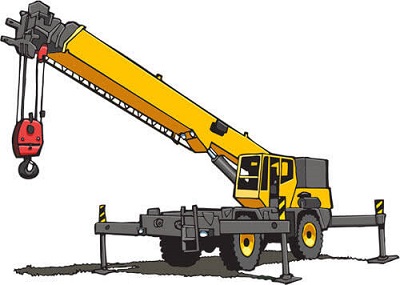
info.afrindex.com
China-Africa Trade Information Service

info.afrindex.com
China-Africa Trade Information Service

Image from Creative Safety Supply
As global commodity prices pick up, manufacturing in Africa will increase demand for various lifting equipment to ensure efficient material handling processes.
According to the African Centre for Economic Transformation (ACET), the average share of manufacturing in the continent's overall economy slumped by 7% between 1975 and 2015, but production has nearly doubled from $85 billion in 2000 to more than $160 billion in 2015.
It is estimated that Africa's manufacturing sector has been growing at an annual rate of 3.5%, despite different countries in the continent exhibiting unique growth trends, which could have a direct effect on the region's demand for cranes and hoists— especially for key industries such as cement, metal processing, mining and chemicals. Indeed, the African Development Bank cites manufacturing in West Africa, which has the lowest share in the sub region's gross domestic product (GDP) compared to other sub-regions in the continent except for Ivory Coast, where the sector contributed about 18% to the country’s economy in 2017.
The bank says manufacturing in the sub-region "is confined to light industry processing primary products and producing consumer goods", which probably explains why uptake of heavy overhead lifting equipment by industries is still low compared to Southern Africa and other developed markets such as Europe, Asia and America.
"The West African market for hoists along with requirements for lifting equipment in general remains somewhat behind more developed parts of the world," says John Traynor, managing director at Paterson Simons, a leading market player in West Africa which supplies and installs chain hoists, wire rope hoists and complete cranes such as single or double girder and goliath.
But some specific manufacturing industries such as cement, which relies on specialised heavy-duty overhead lifting equipment, has recorded notable growth especially in East Africa where production figures reached 14.4m tons in 2017 with projections the volumes could spike to 22.2m tons by 2023 according to industry reports. Elsewhere in South Africa, the country's steel industry body, Steel and Engineering Federation of Southern Africa (Seifsa) says the manufacturing of metal is expected to post 1.1% growth in 2018 after the impressive 2.7% reported in 2017. This is likely to sustain demand for heavy overhead lifting equipment associated with the industry.
The fastest growing segment of Africa's lifting industry is the service and maintenance component with more customers increasingly asking their suppliers for more "servicing, repairing, modifying and load testing of all models of cranes and hoists" according to Emil Berning, director of Industrial Cranes & Industrial Service at Konecranes South Africa.
He said the tendency among consumers of lifting equipment in the sub-Saharan Africa is to "secure long term major service contracts for all types of cranes and hoists." However, a major constraint in the growth of the service and maintenance of crane and hoist market remains to be the long-term high cost for project owners especially those who rely on imported equipment.
But the service and maintenance component of the lifting equipment costs impacts on the long-term cost of cranes and hoists, depending on whether the products are sourced locally or imported.